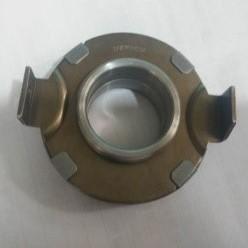When it comes to your vehicle’s clutch system, smooth gear shifting and reliable performance depend on more than just the clutch disc and pressure plate. One critical but often overlooked component is the clutch release bearing. This small part plays a big role in engaging and disengaging the clutch, and without it, your car’s drivability and transmission health can suffer.
👉 Learn more about clutch release bearing options designed for durability and consistent performance.
What Is a Clutch Release Bearing?
A clutch release bearing—also known as a throw-out bearing—is a vital part of the clutch system in manual transmission vehicles. Its main function is to apply pressure to the clutch diaphragm spring, allowing the clutch disc to disengage from the flywheel when you press the clutch pedal.
It sits between the pressure plate and the clutch fork and moves in and out every time the pedal is used. Because it undergoes continuous movement and pressure, it's one of the first parts in the clutch assembly to wear out over time.
How Does It Work?
When the clutch pedal is pressed:
-
The clutch fork pushes the release bearing toward the rotating pressure plate.
-
The bearing presses against the diaphragm spring, releasing pressure from the clutch disc.
-
This action disconnects the engine from the transmission, allowing for gear shifts.
When the pedal is released, the bearing retracts, and the pressure plate re-engages with the clutch disc, re-connecting the engine to the drivetrain.
This process is essential for every gear change. A worn-out clutch release bearing can cause noise, difficulty shifting, and eventually complete clutch failure.
Common Symptoms of a Failing Clutch Release Bearing
Knowing when to replace your clutch release bearing can save you time and prevent bigger issues. Look for these signs:
-
Whirring or grinding noise when the clutch pedal is pressed
-
Vibration in the pedal or poor clutch response
-
Hard shifting or resistance while changing gears
-
Clutch slippage or failure to fully engage/disengage
These symptoms often appear gradually but can quickly worsen if not addressed.
Why Choose a Quality Clutch Release Bearing?
Installing a high-quality bearing ensures smoother operation and protects other components of your clutch system. Here’s why it matters:
-
✅ Longer lifespan: Quality bearings are made from hardened steel and precision components.
-
✅ Less noise and vibration: Precision-engineered for quiet and smooth motion.
-
✅ Better clutch feel: Ensures consistent engagement and disengagement.
-
✅ Reduced maintenance: A sealed design keeps contaminants out, extending service life.
For OEM-fit bearings that meet or exceed performance standards, explore the clutch release bearing collection at NMR Bearing.
Installation and Maintenance Tips
-
Always replace the bearing with the clutch kit to avoid premature wear.
-
Lubricate if recommended by the manufacturer—some bearings are pre-lubed and sealed.
-
Avoid riding the clutch as it increases bearing wear.
-
Inspect surrounding parts like the clutch fork and pressure plate for wear.
Regular inspection during clutch maintenance can help prevent failures down the road.
Conclusion: Protect Your Clutch System with a Reliable Clutch Release Bearing
Your vehicle’s clutch system relies heavily on the clutch release bearing to operate efficiently. While small in size, this component ensures each gear change is smooth, safe, and responsive. Ignoring signs of wear can lead to larger transmission issues and expensive repairs.
For reliable performance and long-term durability, investing in a high-quality clutch release bearing is essential. Whether you're replacing a worn-out part or upgrading to an OEM-grade bearing, always choose trusted components built to handle the demands of daily driving.

